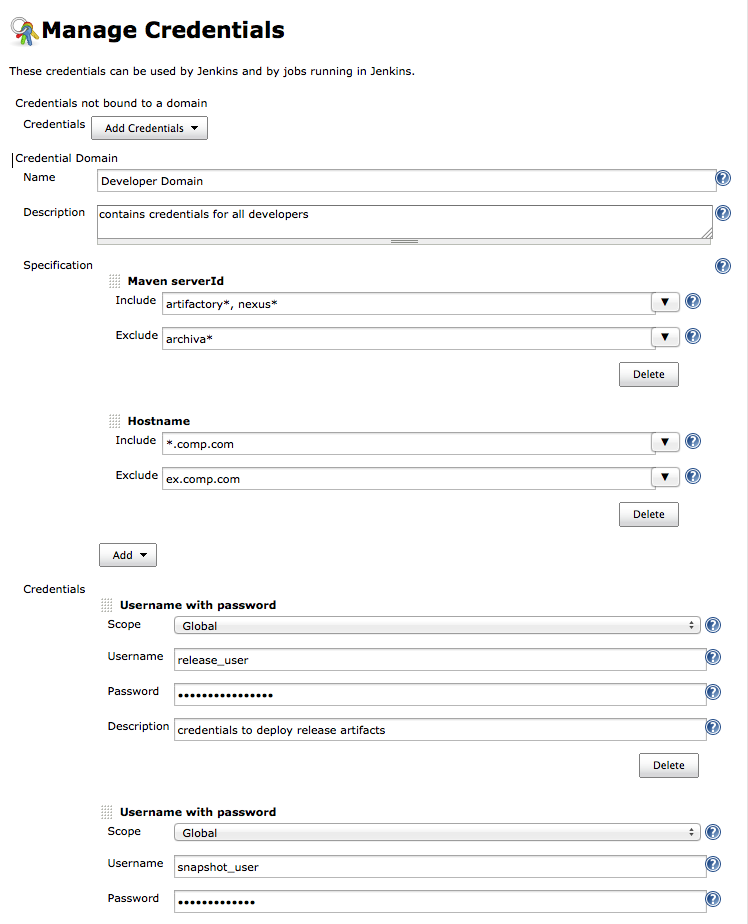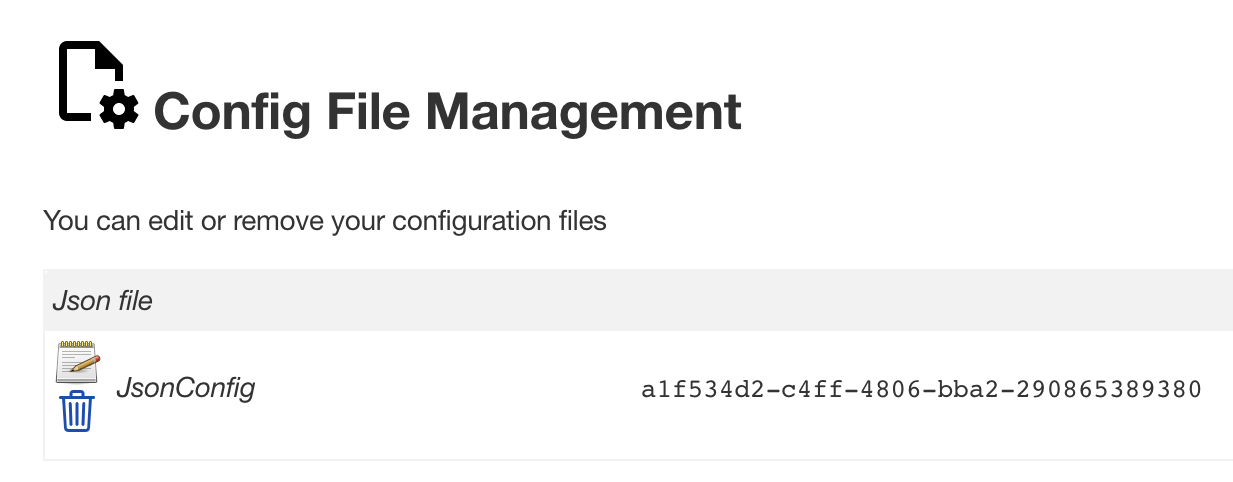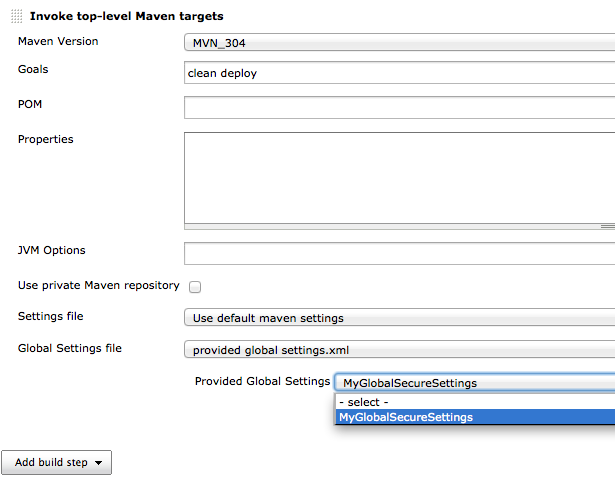It will allow you to copy various similar configuration files to all your nodes. It also adds the ability to edit those files through the Jenkins UI.
In general, you can manage whatever file format you like with this plugin (except binary), but the UI provides some advanced editing support for the following file types:
-
Maven settings.xml (user and global)
-
Plain XML
-
Groovy
-
JSON
-
Custom (plain text)
Choose the "Managed files" in the administration home:
Edit an existing file or add a new file:
Choose the configuration type:
Edit the content:
Configure the Maven plugin to use it:
Provide any config file to a project
The file types Global Maven settings.xml and Maven settings.xml have built-in support for the Credentials Plugin. When the plugin serves the settings.xml to the maven execution, the credentials get injected. This functionality is only available in the maven builder (e.g. for freestyle projects) and maven project type.
After installation of the Config File Provider Plugin, a new Credentials Specification is available and can be used to mark credentials domain to contain credentials valid for maven server ids. The "Maven serverId" Specification allows you to define serverId patterns - this will make it easier to select the correct credential when configuring the settings.xml.

The current implementation supports "Username with password"-credentials. If your passwords are encrypted by maven, you can store the encrypted passwords in the same configuration - but you have to make sure the settings-security.xml is available to the job, unfortunately maven does not yet provide a way to pass this file as well, so this file has to be located at the original location required by maven (<user.home>/.m2)
When configuring the settings.xml (user or global), you can add as many credential mappings as you wish, as soon as you add at least one serverId-credentials mapping to a config file all server configs in the same file will be removed and replaced by the ones you have explicitly added - this way you are sure which credentials finally end up in the file used by the jobs.
This example will add two server configurations to your settings.xml, one called artifactory.prod (using release_user with password) and the other artifactory.dev (using snapshot_user with password).

Now provided settings.xml with credentials can be used in the project and builder configuration. A common practice would be to define a global settings.xml to provide credentials and repository definitions and have local (default) settings.xml define the location of the local repo.
The configuration files can be used in Jenkins pipeline.
The configuration file can either be stored in a desired file path or can be stored in a temporary file identified by the given "+variable+".
Sample for a Maven build:
node {
git url: 'https://github.com/spring-projects/spring-petclinic.git'
// install Maven and add it to the path
env.PATH = "${tool 'M3'}/bin:${env.PATH}"
configFileProvider(
[configFile(fileId: 'maven-settings', variable: 'MAVEN_SETTINGS')]) {
sh 'mvn -s $MAVEN_SETTINGS clean package'
}
}
The "Pipeline Syntax" page helps to write the proper syntax.
-
Managed Script Plugin — Managed scripts are shell scripts which are managed centrally by an administrator and can be referenced as a build step within jobs.
This plugin makes use of the org.jenkinsci.lib.configprovider.ConfigProvider ExtensionPoint. If you need to have easy administration of a new file type, just implement this ExtensionPoint and you’re ready to go.
The easiest way to do so is to extend org.jenkinsci.lib.configprovider.AbstractConfigProviderImpl - have a look at org.jenkinsci.plugins.managedscripts.ScriptConfig.ScriptConfigProvider










